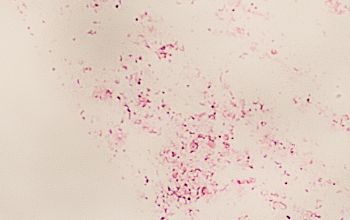Mycoplasma hominis (Metamycoplasma hominis)
-
General information
Taxonomy
Family: Mycoplasmataceae
Genus: Metamycoplasma hominis
Formely: Mycoplasma hominis
Natural habitats
M. hominis lives parasitically and saphrophytically with hosts.
M. hominis plays a significant role in the microflora of men and women.
Vector and mode of transmission.
M. hominis infection is spread through vaginal intercourse, oral-to-genital contact, and vertically from mother to her infant in utero or by the colonization by the bacteria as the baby descends through the birth canal or by nosocomial acquisition through transplanted tissues
Clinical significance
M. hominis is a pathogen in humans commenly found as part of urogenital tract flora especially of women and sexually active adult males.
This bacteria cause a variety of infections which may lead to pelvic inflammatory disease, post-abortal fever, post partum fever and extragenital infections for immunodepressed humans.
It also can cause meningitis, pneumonia and abcesseses in newborn children.
It can be present in bacterial vaginosis.
Neonatal infection
Neonates, especially if preterm, are susceptible to Mycoplasma infections organisms through vertical transmission or colonization through passing the birth canal or in utero.
If the bacteria is present in the bloodstream it can access the central nervous system.
If Mycoplasma hominis and ureoplasma organisms are specifically sampled and cultured, they are of etiollogic significans in neonatal lung disease, bacteremia, and meningitis.
There are no characteristic signs and symptoms that can determine the type of pathogen present
Clinicians can consider Mycoplasma species if signs and symptoms of infections are present and if the infant does not improve with administration of beta-lactam medications.
Deaths have occurred in neonates with septicemia and meningitis caused by M. hominis.
Important
This bacteria is important due to the infections it can cause and is growing resistance to treatment, including erythromycin.
Cell wall
Mycoplasmas have a triple-layered membrane and lack a cell wall.
L-forms
The permanent lack of a cell wall barrier makes the Mycoplasma (class: Mollicutes) unique among prokaryotes and differentiates from bacterial L-forms for wich the cell wall is but a temporary reflection of enviromental conditions.
-
Gram stain
Mycoplasma are smaller than conventional bacteria in cellular dimensions as well as genome size, making them the smallest free-living organism known
Lack of cell wall also prevents the Mycoplasma from staining by the Gram reaction.
M. hominis are a pleomorphic, gram negative bacteria with an average diameter of 0.2 to 0.3 µm.
The pleomorphic nature of M. hominis has resultated in observations of cocci, filamentous and irregular shapes.
Mycoplasma cells resemble those of
- coccoid or ovoid bacteria, 0.27 x 0.73 µm and a diameter of 0.42 µm.
- tapered rods 1-2 µm of about 0.2 - 0.3 µm
They have no cell wall
They lack the genes coding for a cell wall.
-
Culture characteristics
-
Obligate intracellular bacteria
BBA aeroob (Brucella Blood Agar)
Small pinpoint colonies.
Typical mycoplasmal colonies vary from 15 to 300 µm in diameter.
Colonies of M. hominis, often exhibit a "fried egg" appearance owing to the contrast between deeper growth in the center of the colony, with more shallow growth at the periphery.
-
-
Characteristics
-
References
James Versalovic et al.(2011) Manual of Clinical Microbiology 10th Edition
Karen C. Carrol et al (2019) Manual of Clinical Microbiology, 12th Edition



